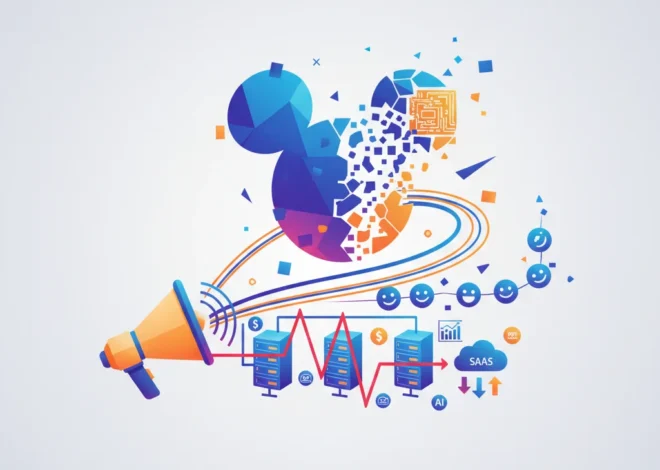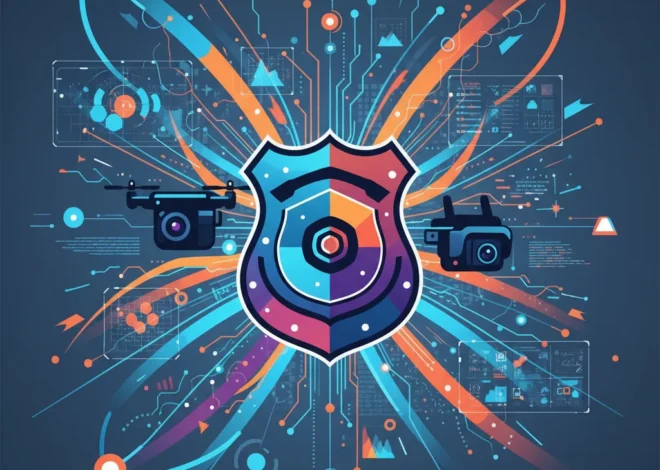
Beyond the Zap: How AI and the Cloud are Transforming the Taser
When you hear the word “Taser,” what comes to mind? For most of us, it’s the iconic, high-voltage “zap” – a last-resort tool for law enforcement. It’s a piece of hardware, a physical object designed for a single, critical purpose. But what if I told you that the Taser is no longer just a device? What if it’s become a gateway to a sprawling ecosystem of artificial intelligence, cloud computing, and subscription software?
That’s the reality of modern policing technology, and it’s a transformation being spearheaded by Axon, the company behind the Taser. In a recent discussion on BBC’s Tech Life, the company’s leadership painted a picture of a future where the physical device is just the tip of a massive digital iceberg. Axon has pivoted from a hardware manufacturer to a full-blown tech company, and this shift has profound implications for everyone – from police officers on the street to software developers in Silicon Valley, and even the general public.
This isn’t just about a smarter stun gun. It’s about a fundamental change in how public safety is managed, documented, and analyzed. We’re talking about a world of automated report writing, AI-powered video analysis, and a cloud-based infrastructure that handles petabytes of sensitive data. Let’s unplug the Taser from its holster and plug it into the digital future to see what’s really going on.
From Stun Gun to Smart Ecosystem: The Hardware Pivot
For decades, Axon (formerly TASER International) was defined by its flagship less-lethal weapon. The business model was simple: sell hardware to law enforcement agencies. But around a decade ago, a strategic shift began. The company recognized that the real value wasn’t just in the moment of conflict resolution, but in the data surrounding it. This led to the development of the Axon Body camera.
Initially, the Taser and the body camera were separate pieces of kit. But the first spark of true innovation came when they started talking to each other. With “Signal technology,” drawing a Taser from its holster could automatically trigger every Axon camera within a 30-foot radius to start recording. This was a simple yet brilliant piece of automation. It removed the element of human error—an officer forgetting to press record in a high-stress situation—and ensured critical moments were captured.
This integration was the first step. It transformed a simple hardware product into a connected device, a node in a growing network. The company wasn’t just selling a product anymore; it was selling a system. This laid the groundwork for the most significant transformation of all: the move to the cloud.
Your New Digital Co-Pilot: How AI Went From Sci-Fi to Your Daily To-Do List
The SaaS Revolution in Law Enforcement
Handling thousands of hours of video footage from an entire police force is a logistical nightmare. Where do you store it? How do you manage chain of custody for evidence? How do you share it securely with prosecutors? Axon’s answer was to build a cloud platform: Evidence.com.
This move turned Axon into a Software-as-a-Service (SaaS) company. Instead of a one-time hardware sale, they now offered long-term subscriptions for data storage, evidence management, and software tools. For police departments, it offered a streamlined solution to a massive data problem. For Axon, it created a predictable, recurring revenue stream and made their ecosystem incredibly “sticky.” Once a department commits its entire evidence workflow to a single platform, switching becomes incredibly difficult.
The scale of this operation is staggering. Axon’s cloud services now manage over 140 petabytes of data, with that number growing exponentially (source). This transition from hardware to a cloud-based SaaS model is a playbook that many modern startups dream of, but Axon executed it in the traditionally slow-moving government sector.
The AI-Powered Future: Drones, Reports, and Ethical Dilemmas
With a massive, centralized repository of data, the next logical step is to apply artificial intelligence and machine learning to make sense of it all. This is where Axon’s vision becomes both incredibly powerful and deeply controversial.
The most immediate applications are focused on efficiency and automation:
- Automated Transcription: AI models can transcribe audio from body camera footage, making it searchable and easier to review.
- Smart Redaction: Manually blurring faces, license plates, and other sensitive information in videos for public release is a time-consuming task. AI-powered software can automate this process, saving thousands of hours of manual labor.
- Report Generation: The holy grail for many officers is the elimination of paperwork. Axon is developing AI that can analyze footage and audio from an incident to auto-generate a first draft of an official report. According to some estimates, this could reduce an officer’s paperwork time by up to 80% in the coming years.
However, the future Axon envisions goes even further. The company has publicly explored concepts like AI-powered Taser-equipped drones for use in situations like school shootings. While they have since paused this project after significant backlash (including from its own AI Ethics board), it reveals the ambition of their long-term roadmap. The goal is a “real-time operations” platform where AI provides live intelligence to officers in the field, analyzing feeds from body cameras, drones, and stationary sensors to create a complete picture of a situation as it unfolds.
The Tech Stack Behind Public Safety
For the developers, entrepreneurs, and tech professionals in our audience, it’s worth taking a look under the hood. Building a platform like Axon’s is a monumental feat of engineering that touches on nearly every major trend in modern technology.
The entire system relies on a robust and scalable cloud infrastructure, likely running on a major provider like AWS or Microsoft Azure. The sheer volume of video data requires sophisticated solutions for ingestion, storage, and retrieval. From a programming perspective, the challenges are immense. The software must be flawlessly reliable—a bug in an evidence management system could have devastating legal consequences. This demands rigorous testing, redundancy, and an unwavering focus on uptime.
And then there’s cybersecurity. We’re talking about one of the most sensitive datasets imaginable. A breach could expose evidence, victim information, and police operations. Consequently, Axon’s security posture has to be world-class, employing end-to-end encryption, multi-factor authentication, and constant monitoring against threats.
To illustrate the evolution, let’s compare the old way of doing things with the modern, integrated tech stack:
| Feature | “Old School” Model (Pre-2010) | Modern Ecosystem (AI/Cloud-Powered) |
|---|---|---|
| Primary Device | Standalone Taser (Hardware) | Connected Taser, Body Camera, Fleet Camera (IoT Network) |
| Data Storage | On-premise servers, DVDs, physical media | Secure, scalable cloud storage (SaaS) |
| Evidence Review | Manual review in a station viewing room | Web-based platform with search, tagging, and sharing |
| Reporting | 100% manual data entry by officers | AI-assisted report generation from video/audio data |
| Key Technology | Electrical engineering | Cloud computing, AI/ML, cybersecurity, SaaS |
Cybersecurity's Silent Crisis: Why Our Digital Guardians Are Burning Out (And How AI Can Help)
A Case Study for Startups and Innovators
Axon’s journey is a masterclass in business transformation. They took a legacy hardware product and used it as a beachhead to build a dominant software and data empire in a niche, high-barrier-to-entry market. For entrepreneurs, especially those in the “GovTech” space, there are valuable lessons here.
- Solve the Entire Workflow: Axon didn’t just sell a camera; they sold a solution to the entire evidence management problem, from capture to courtroom.
- Embrace Recurring Revenue: The shift to a SaaS model created a stable financial foundation for long-term R&D and growth.
- Build a Moat with Data: By becoming the central repository for a department’s data, they created high switching costs, locking in customers and building a defensible market position.
The public safety technology sector is ripe for further innovation. There are opportunities for startups to build complementary services, better AI models for specific tasks (like de-escalation analysis), or even virtual reality platforms for more effective officer training. The key is to understand the complex needs and constraints of the industry, from legal standards to cybersecurity requirements.
The £5 Billion Bitcoin Heist: How AI and Cybersecurity Brought Down the 'Goddess of Wealth'
Conclusion: The Future is Connected and Complicated
The Taser is no longer just a Taser. It’s the endpoint of a vast, interconnected system of hardware, software, and artificial intelligence that is reshaping law enforcement. The company behind it has become a case study in technological disruption, demonstrating how a focus on software and data can revolutionize even the most traditional industries.
The benefits are clear: greater efficiency, enhanced transparency, and powerful new tools for public safety. But this progress comes with a heavy burden of responsibility. As we integrate more automation and AI into critical civic functions, we must proceed with caution, demanding transparency, accountability, and a robust ethical framework. The future of tech in public life is not just about what we can build; it’s about what we should build. And that’s a conversation that involves all of us.


